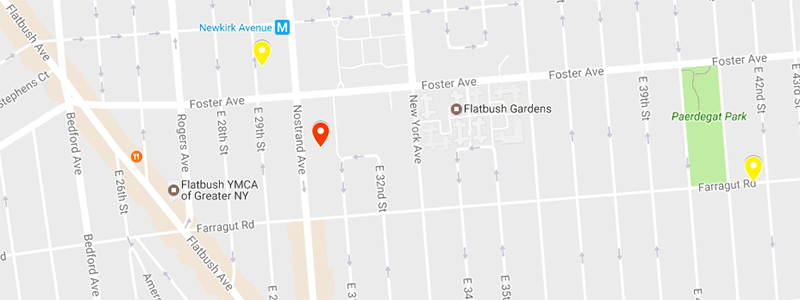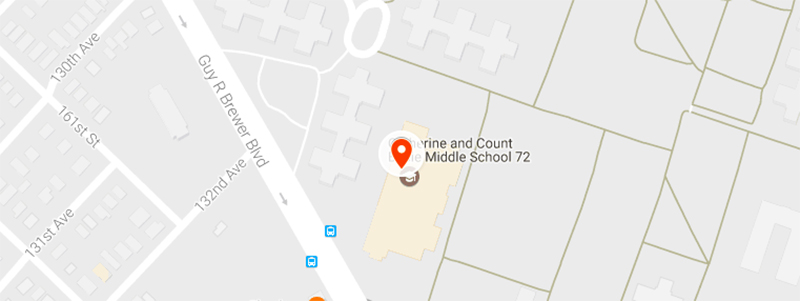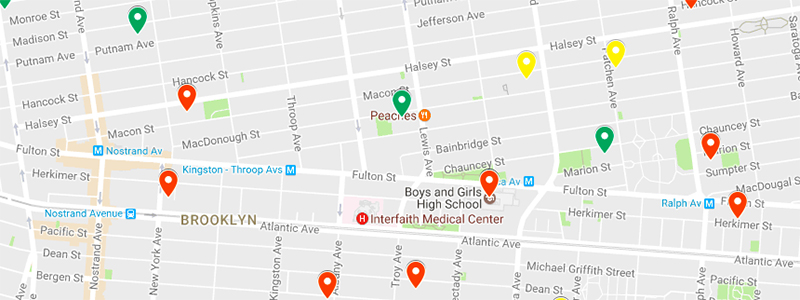Exclusive: How Safe Are NYC’s Schools? New Interactive Map Compares What Teachers & Students Are Reporting

As states rethink school accountability under the Every Student Succeeds Act, policymakers often overlook information that goes to the heart of what might be the most fundamental question for any parent: Does my child feel safe?
Data about the real inner workings of schools, from teacher morale to academic culture to student safety, are rarely rated, and almost never reported.
New York City, however, conducts comprehensive school climate surveys of teachers and/or students and — unlike almost every other major district — makes the full data set available to the public.
I’ve taken a slice of the data — questions pertaining to school order and safety — and plotted the results on a public Google map so parents across the Big Apple can quickly and easily see not just what students and teachers at their schools are saying, but how those responses compare to other nearby schools.
The data reflects responses from 1,776 of more than 1,800 district and charter schools in the city that participated in surveys given in the 2015–16 school year, the most recent available. Where the information is available, the map also notes how those responses compare to answers from 2013–14, before Mayor Bill de Blasio’s school discipline reform was implemented.
Here are the city’s schools, color-coded to reflect the survey results; you can scan and zoom below, or click here for a full-screen version that you can search by address or specific school name.
To take stock of the individual survey results, click on the green, yellow, or red pin and see the pop-up window. (Click here for a full breakdown of the methodology behind the map.)
Since elementary school students are not surveyed, the map plots K-5 teachers’ responses to a question asking whether order and discipline are maintained at their school.
Schools where less than 15 percent of teachers said order is not maintained are labeled green/safe; schools where 15 percent to 30 percent of teachers said order is not maintained are labeled yellow/somewhat safe; schools where more than 30 percent of teachers said order wasn’t maintained are labeled red/less safe.
For middle and high schools, the map plots student responses to a question about physical fights happening at school. Schools where less than 15 percent of students said fights happen “most” or “all” of the time are labeled green/safe; schools where 15 percent to 30 percent of students reported frequent fighting are coded yellow/somewhat safe; schools where more than 30 percent of students reported frequent physical fighting are coded red/less safe.
Some schools are co-located, so multiple schools with very different levels of safety may be found within the same building.
Also, a reminder that participation for charter schools was optional. While most participated, some did not. Schools without any answers do not appear on this map.
When teachers and students say a school is less safe
Some of the least safe schools in NYC, by teacher and student reports, suffer from such bad leadership that the press has taken note.
Take, for example, Public School 269 in Flatbush, Brooklyn, which is just about the worst elementary school, according to teachers: 81 percent say order and discipline are not maintained. P.S. 269 gained some notoriety two years ago after its principal, Jazmine Santiago, used school funds to install her own private gym. One teacher told the New York Post, “She comes in early, she goes to the gym. Even when class is in session, she’s still in the gym.” One parent said, “That’s not right at all. The funds should go to helping school issues like going toward bullying campaigns.” While elementary school students aren’t asked about bullying, it seems likely that at a school where barely 1 in 5 teachers think order is maintained, bullying is quite a problem.
At Catherine & Count Basie Middle School 72 in Jamaica, Queens, 79 percent of teachers say order and discipline are not maintained. Kathy Perez is no longer one of them: She successfully sued the school for $125,000 and transferred to a new school after student misbehavior led to her hospitalization twice. Perez told the New York Post, “These kids knew they could beat on me all they wanted, and the administration would tacitly encourage it by not doing anything about it.” According to Perez, one boy ran around class swinging a collapsible cane; he was removed for several minutes, “then sent … back in — with the cane.”
Incidents like this might have something to do with the fact that 75 percent of students say physical fights happen most or all of the time. Perez also related that another boy pretended to hump his backpack, telling her, “you know you want it so drop your pants. I’m gonna give it to you hard.” Incidents like this are perhaps less shocking when you consider that 87 percent of the school’s students say their peers don’t respect each other.
Safe havens
At P.S. 204 Morris Heights elementary school in the Bronx, only 9 percent of teachers say discipline and order aren’t maintained. That’s an order of magnitude better than its elementary school neighbors: at P.S. 109 Sedgwick, 68 percent of teachers say order is not maintained, and at P.S. 226, 60 percent of teachers say their school is disorderly. If students at P.S. 204 stay in the neighborhood, they may see more disorder as they grow up: At Intermediate School 232, less than a block away, 46 percent of students say physical fighting occurs frequently, and at M.S. 390, a whopping 70 percent of students say physical fighting happens “most” or “all” of the time.
M.S. 35 Stephen Decatur, in Bedford-Stuyvesant, Brooklyn, is an outpost of order in a neighborhood of rough schools. Only 6 percent of students say physical fighting is a frequent occurrence, and only 1 percent of students say they see gang activity. Students at neighboring schools aren’t nearly so lucky: At P.S. 140, 75 percent of students complain of frequent fights and 54 percent of gang activity; at M.S. 266, 52 percent of students cite frequent fights and 20 percent gang activity; at P.S. 308, 77 percent of students report frequent fights and 36 percent gang activity.
Stephen Decatur also appears to offer a safer environment than its charter school neighbors: At Unity Prep, 39 percent of students report frequent fighting and 16 percent gang activity, and at Launch Expeditionary Learning, 40 percent of students report frequent fighting and 24 percent gang activity.
At East Brooklyn Community High School, only 5 percent of students report frequent fighting, only 7 percent of teachers report disorder, and a remarkably low 11 percent of students say their peers don’t respect each other. At the neighboring Middle School for Art and Philosophy, 83 percent of students report mutual disrespect, 48 percent report frequent physical fighting, and 35 percent of teachers say order is not maintained. At Brownsville High School, less than a mile away, 34 percent of teachers say order isn’t maintained, 35 percent say students don’t respect each other, and 38 percent report frequent fighting.
A charter advantage?
When you see a green dot next to several red ones in New York City, frequently you’ll find yourself looking at a charter school.
Take, for example, Achievement First East New York Charter School in Brooklyn. Only 2 percent of teachers there say order isn’t maintained, only 10 percent of students say physical fighting is frequent, and only 14 percent cite bullying as a problem. Compare that to the Essence School, I.S. 311, where 31 percent of teachers say order isn’t maintained, 51 percent say physical fighting occurs frequently, and 36 percent say bullying is a problem.
Or compare that to School of the Future Brooklyn, where 42 percent of teachers say order isn’t maintained, 36 percent of students say physical fighting is frequent, and 37 percent say bullying is a big problem. If you live in East New York and want a safe school for your kids, your best option is a charter school.
For parents in Boerum Hill, Brooklyn, New Dawn Charter High School is the safest bet. Only 5 percent of students say they feel unsafe in the halls, compared with 26 percent at the Cobble Hill School for American Studies, 23 percent at the Boerum Hill School for International Studies, and 22 percent at Brooklyn Frontiers High School. This is particularly impressive, given that New Dawn specializes in helping students who have faced significant academic challenges and fallen behind on their credits towards obtaining a high school diploma.
Max Eden is a senior fellow at the Manhattan Institute, specializing in education policy. See a similar breakdown of schools in Los Angeles, and click here to read Eden’s analysis of lessons he learned from compiling and mapping these data.
Get the latest news about school climate and school safety, as well as access to new interactive tools that better help parents understand their neighborhood and school district, by signing up for The 74 Newsletter.
Get stories like these delivered straight to your inbox. Sign up for The 74 Newsletter

;)







